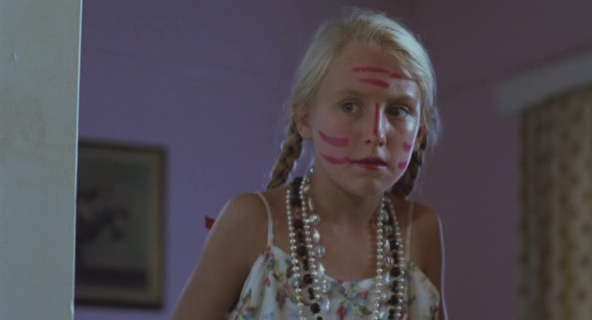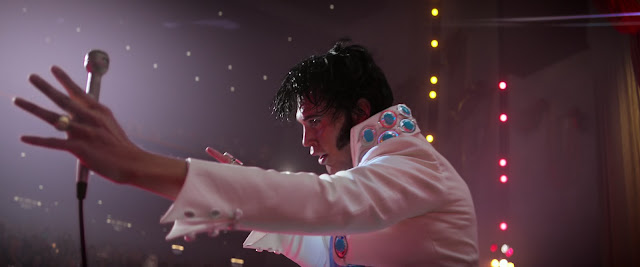Did not expect to see Harry H. Corbett playing a serial killer with a bad toupee and pebble glasses in Cover Girl Killer, and neither did I predict liking a Baz Luhrmann film. Elvis is this month's favourite first time viewing and a great example of Industry Rule #4080. Also liked Ann Walker's twisted childhood drama, Celia and Barry J. Gillis' compeletely strange, Wicked World; the latter for all the wrong reasons.
Other than the news and weather, no noteworthy TV this month. Winner!
Dada Debaser Notes:
- Completely engrossed with Charlotte Austin developing feelings for her husband's pet gorilla, Spanky, in the Ed Wood Jr. penned, The Bride and the Beast. Shame there was so much stock safari footage serving as filler for much of the film.
- Enjoyed Diana Dors' performance in the British crime thriller, Tread Softly Stranger.
- Other than Luhrmann's Elvis, I also watched John Carpenter's biopic on the "King of Rock & Roll". Found it largely dull in all honesty, despite Kurt Russell's performance being good. The only other takeaway from the film was the creepy relationship between his mother, which I interpreted as possibly oedipal.
- Should have included Faceless as one of Caroline Munro's best films.
- Larraz's Stigma feels like two completely different films crudely spliced together. A real shame as they would have had far greater potential as individual pictures.
- The mental gymnastics used by some folk into believing a tacked on Comanche dub for Prey would improve it is completely ridiculous to me. I left my thoughts on it along with musings on recency bias towards new films in a dedicated post.
- Who would have envisioned Toni Basil from Mickey one-hit wonder fame as an Obi-Wan Kenobi style ghostly apparition in the demonic themed slasher, Slaughterhouse Rock? Nobody, that's who.
- Barry J. Gillis' Wicked World displays such an incredible degree of ineptitude and stupidity that it ends up crossing over into surreal art house territory for me. Loathe the term "so bad, it's good", however, it's more than applicable here.














.png)
.png)










